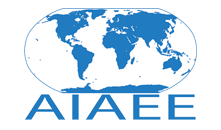Keywords
boundary, script, communication, negotiation, buffalo, adoption of innovation
Abstract
A model utilizing a science-society communication framework was developed to analyze through a casestudy approach the innovation transmission and adoption mechanisms under the dairy buffalo project being implemented by the Philippine Carabao Centre (PCC) in the province of Nueva Ecija. Called a “Mediated Bilateral Model,” Centerit first depicted the unique features of cultural spaces occupied by the farmers, the PCC scientists, and the PCC field technicians. The basic distinguishing feature is the “scripts” of the interacting actors, which constitute the contexts in which their meaning-making and decision-making activities take place. These contextual factors contribute to the shaping of the actors’ distinct frames of reference, which influence their viewpoints or how they interpret meanings. Unmediated and unilateral performance of scripts by scientists was evident in the introductory Technical Training sessions given to farmers. This has resulted in boundary demarcation and in low or non-adoption of particular innovations. Boundary blurring was made possible through a mediated performance of scientific scripts whereby the field technicians, as hybrid actors, engaged in negotiations with the farmers during field visits. These were anchored on joint inscriptions of scientific and farmers’ cultural scripts to what become “interface instruments”, which resulted in integrative agreements regarding the performance or adoption of specific innovations.
Rights Statements
This Item is protected by copyright and/or related rights. You are free to use this Item in any way that is permitted by the copyright and related rights legislation that applies to your use. For other uses you need to obtain permission from the rights-holder(s).
Recommended Citation
Palapac, E. P.
(2011).
Blurring Cultural Boundary between Scientists and Farmers in the Philippines Through a Mediated Bilateral Model.
Journal of International Agricultural and Extension Education, 18(3), 61-71.
DOI: https://doi.org/10.5191/jiaee.2011.18305



